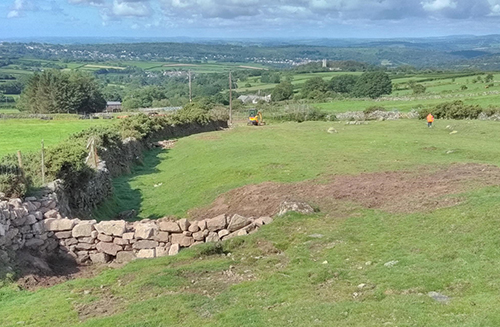Most people wouldn’t want a ‘leaking wall’ but that’s exactly what the River Operations Team at Westcountry Rivers Trust built on Walkhampton Common, Devon, to help with flood management.
This work is part of the Dartmoor Headwater Natural Flood Management Project, a partnership between Dartmoor National Park Authority (DNPA) and the Environment Agency.
It is trialling the effectiveness of using natural river processes, land management techniques and soft engineering approaches to slow down and store water to help reduce the risk of flooding downstream, as an alternative to the more traditional hard engineering approach.
Martin Harmer, senior land and river advisor from WRT said: “It’s fantastic to see our river ops team on-site delivering phase one of these natural flood management interventions.
“Locally sourced granite has been used to construct a number of flow attenuators, placed in the gullies of ephemeral streams to slowly release high water levels via their natural drainage route as needed.”
These structures effectively act as ‘leaking walls’ to de-synchronise and slow flows, reduce flash flooding, and lessen erosion both on the moor and in the catchment below.
Where possible flow attenuators have been integrated against existing wall structures showing signs of degradation and collapse to provide a secondary benefit of strengthening the original corn ditch features.
The design aims to complement the existing local stone landscape and be in keeping with the aesthetics of the Common.
Martin added: “The project involves a number of stakeholders and our thanks go to Joe Hess of Maristow Estate; Graham Colton of J. Colton & Sons at Peek Hill Farm; the Walkhampton Commoners Association; Kerry Smith, Project Officer at DNPA and Lee Bray, Archaeologist DNPA.”
Visit dartmoor.gov.uk/wildlife-and-heritage/our-conservation-work/dartmoor-headwaters-project for more information.



